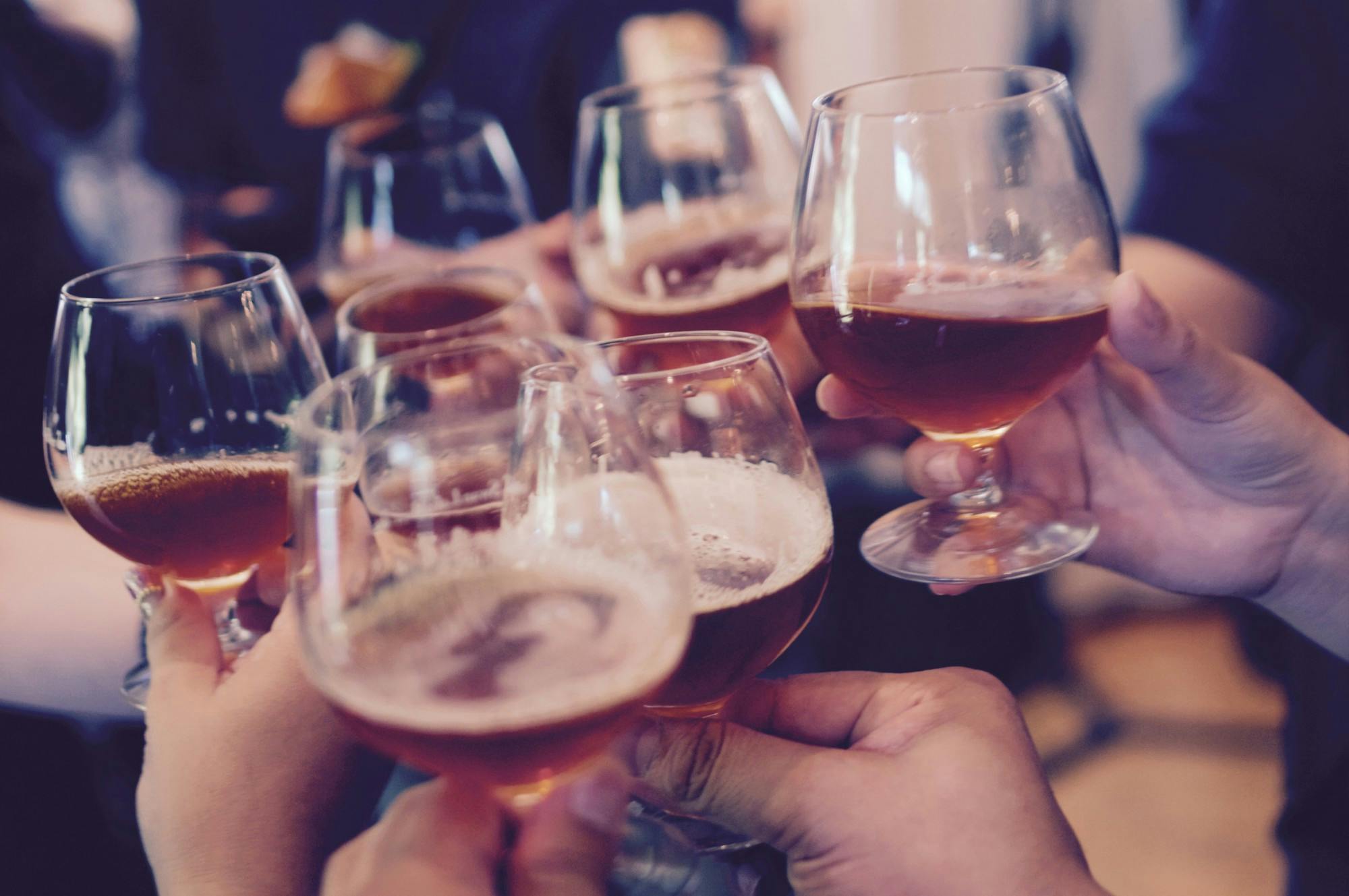Picture this: you’ve had a long day at work. Jane from accounting suggests stopping by the local bar for an after-work drink. She invites your boss and a few other colleagues. “It’ll be great to talk through next week’s presentation with a beer in my hand,” she jokes.
But this seemingly innocent plan can have serious repercussions.
The problem with after-work drinking
According to a new study conducted by American Addiction Centers and Alcohol.org:
- 1 in 10 workers say they drink shots during after-work drinks
- 15% say they have no qualms about getting drunk in front of their boss
- 14% admitted to having acted inappropriately during after-work drinks, a situation that could put a company at risk for a harassment accusation.
More concerning, the average American worker spends more than $3,000 per year on after-work drinks. Sound like a lot? It is—that’s approximately 650 beers per year.
According to the study, most workers spend about two hours drinking after work, which can extend their day to 11 hours. Alcohol is the most widely misused substance, and frequent drinking can lead to dependence or addiction.
We’ve cultivated a drinking culture
Going out for drinks has become a routine for work-related celebration, whether it’s winning a new account or nailing a big presentation. With the rise of coworking spaces, regular beer on tap is advertised as a selling point. Some companies even designate a day of the week for an after-work happy hour. In many organizations, drinking at work is even encouraged, with some companies proudly promoting their Thursday afternoon beer cart perks for recruitment purposes.
The risk of overconsumption in a workplace (or work-related) setting can have serious repercussions for both the individual and their company. The problem is, after-work drinks can be dangerous. The average post-work booze session lasts almost two hours, adding substantially to an already long day on the job. This can contribute to exhaustion, brain fog, and overall lower productivity among workers.
Happy hour has also become a substitute for networking and brainstorming, with a third of the American workers surveyed saying that getting drinks after work promotes team bonding. While the neighborhood bar might provide a neutral environment where co-workers can discuss issues and ideas beyond the pressures of the office, drinking can also lead to situations where employees might say things they don’t mean, make commitments they can’t keep, or behave in otherwise irresponsible or offensive ways.
I’m sure many people are saying, “What’s the big deal?” People have been grabbing drinks with colleagues for years. But the study revealed the average after-work booze session lasts almost two hours, adding substantially to an already-long day on the job. It has also become a substitute for networking and brainstorming; a third of American workers think drinks after work is good for team bonding.
HR leaders must help: Here’s how
While HR can establish codes of conduct that employees must abide by, there will still be limitations on all employee actions outside the workplace. That’s why it’s important for HR leaders can take steps to better manage the things they can control:
- Understand that the employee experience is more than free beer. According to Topia, a global talent mobility company, in 2020, HR leaders must look beyond the trend of offering lifestyle perks—today’s workforce wants more growth opportunities and increased skills. They don’t care about Wine Cart Wednesday. The pressure should be off HR to involve drinking in the everyday culture of the company.
- Help managers set boundaries. Managers should never offer to get a drink with or buy drinks for their subordinates. Drinking with a manager has the potential to put employees in an uncomfortable situation. Unless the manager is inviting and buying for everyone, it could appear that they’re playing favorites. That creates an unfair environment for those who aren’t part of the office party.
- Stop involving alcohol in celebratory or teambuilding events. Not everyone drinks. You may even have employees who are struggling with alcohol addiction. Those employees may feel pressured to attend such an event out of fear of repercussions, being ostracized from further events, or simply missing out. Those who don’t or can’t partake are easily excluded from valuable social time with co-workers when the bar is the only option. Select activities that don’t include drinking and aren’t held at a bar: think bowling, a ropes course, mini-golf, a murder mystery dinner, or even a comedy show. These can give everyone the opportunity to participate without booze.
- Focus on your leaders. According to the Alcohol.org survey, 10% of bosses don’t mind getting drunk in front of employees. Yikes. Encourage managers to set a good example. Host training that discusses the dangers of after-work drinks that some may not realize: impaired decisions, promises that can’t be met, favoritism, and awkward situations. Managers should set a good example by curtailing after-work drinks and participating in other social activities with co-workers. Doing so will encourage employees to follow their lead. If happy hour is no longer the place to be for networking and socializing, employees won’t feel compelled to drink so much.
It’s not HRs responsibility to control what employees do after hours. Still, by setting clear expectations and boundaries with staff, HR can play a role in curbing destructive drinking behaviors.
